In nature’s soothing retreat, I find my cosy comfort,
Urging my fancy, with force impelling me into an effort!
The Valley of Flowers Trek is more than just a hike; it’s a journey through one of India’s most stunning and untouched natural landscapes. Nestled in the heart of Uttarakhand, the Valley of Flowers offers an unforgettable experience with its lush meadows, vibrant floral displays, and the serenity of the Himalayas. Whether you’re an experienced trekker or a first-timer, this adventure promises to be a once-in-a-lifetime opportunity. In this guide, I’ll share my personal experience, the best time to visit, and everything you need to know to plan your own trek to this spectacular destination.
I heard sounds of rustling leaves and swaying pines whistling and rejoicing through the vast Himalayas. Accompanied by the breeze arising from the Valley of Flowers National Park in Uttarakhand, it called me. The divine mountains in the Shivalik Range of the Himalayas have been beckoning ever since I set foot in Chamoli almost a year ago.

Image Courtesy: Debraj Das
The UNESCO World Network of Biosphere Reserves listed site is nestled in the Western Himalayas. It lies coated under layers of snow for the better part of a year and opens up for nature enthusiasts only in summer & monsoon. It’s the time when hundreds of indigenous flower species bloom and turn the entire region in the Nanda Devi Biosphere Reserve into a divine spectacle. Moreover, the treacherous trails leading to the valley make it one of the most obscure places to reach in the Himalayas.

Valley of Flowers National Park is special for the rich biodiversity that it houses. As you are travelling to the valley by road, you can be assured of unparalleled natural views. The trio of Ghangaria, Valley of Flowers, and Hemkund is studded with infinite streams shooting out of the mountains. Hundreds of flora species, including those with medicinal advantages, can be spotted in the valley.
About the Hemkund and Valley of Flowers Trek

Getting to the numbers, the Valley of Flowers is located at an altitude of 3650 meters above sea level. The road to the valley is quite interesting, with most of it concealed under thick forest. The trek begins from Pulna, almost 5 km from Govindghat. Govindghat to Pulna can be easily covered in a jeep at a nominal charge of INR 50 per person. Here, luggage is unloaded from the vehicle and handed over to the trekkers.

Ponies and porters can be seen frequenting the trail in large numbers. They’re there to help trekkers with the luggage. Remember, it’s a 14 km trek from Pulna to Ghangaria, which ascends to a maximum altitude of 3050 meters.
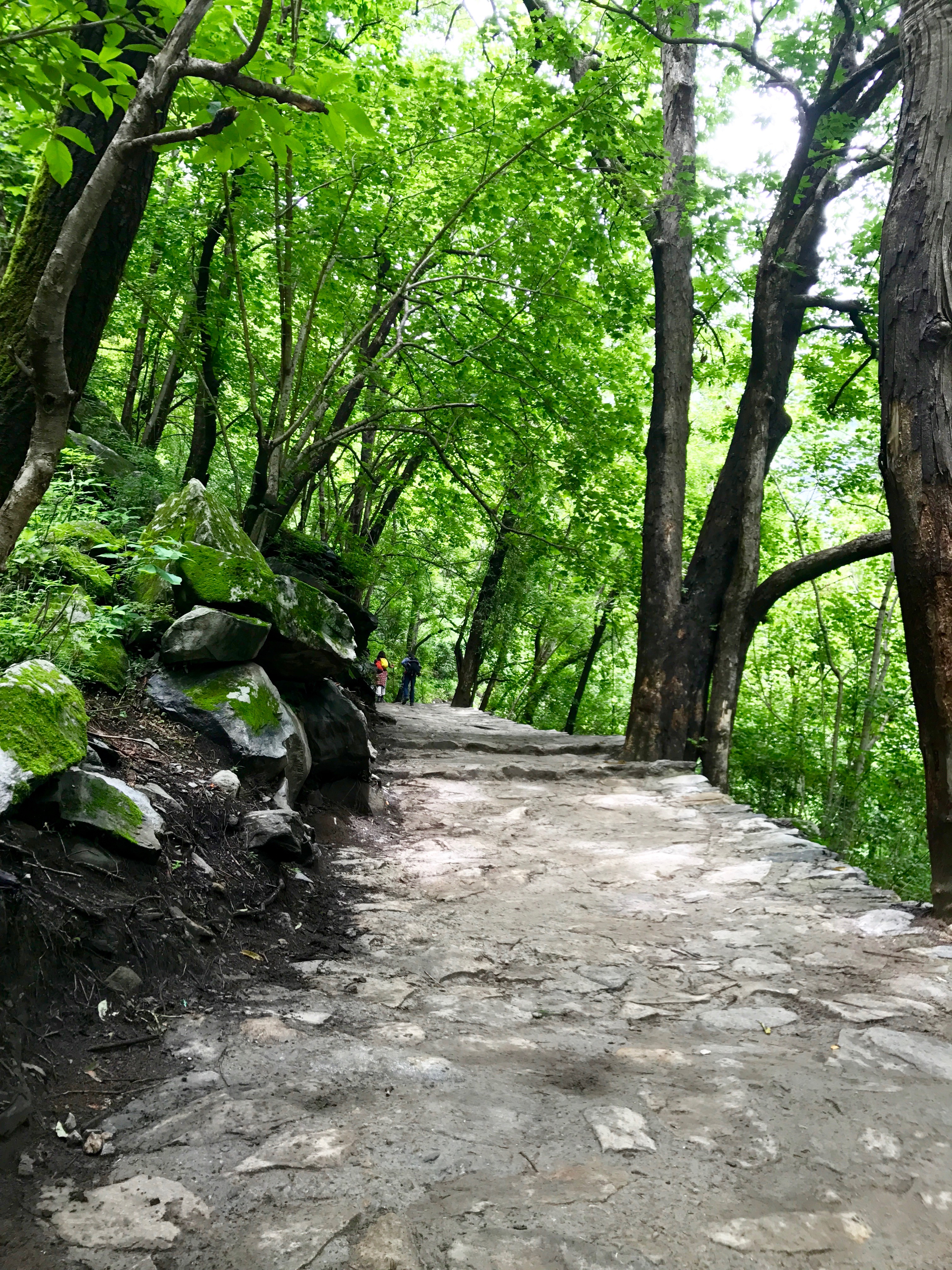
The 7-hour trek is endowed with exceptional views. Take time to marvel at these precious frames.
Ghangaria is technically the base camp for the Hemkund Sahib and Valley of Flowers Trek. While Valley of Flowers is a 7 km trek from Ghangaria, Hemkund Sahib is a steep 7 km trek.

At 4633 meters, Hemkund Sahib is the highest Sikh pilgrimage in the world. It is here that the holy Hemkund is fed by the glacier emerging from the remote mountains in the Himalayan region.
Detailed information about the Valley of Flowers Trek

One has to traverse the Five Prayags – the confluence of holy rivers sacred to the Hindus, to reach the Valley of Flowers. These rivers fall en route to the Valley and look at their glorious best.

Image Courtesy: Debraj Das
It starts with Dev Prayag, where Bhagirathi meets Alakhnanda (Tehri Garhwal), continues to Rudraprayag – Mandakini meets Alakhnanda (Rudraprayag), further heads to Karnaprayag – Pinder Ganga meets Alakhnanda (Chamoli), Nandprayag – Nandakini meets Alakhnanda (Chamoli), and finally to Vishnuprayag – Dhauli Ganga meets Alakhnanda (Chamoli).

The majestic views of colossal mountains guarding the road on either side would humble you and leave you enchanted. My head hung out of our tempo traveller throughout the journey, and I tried to capture the best nature views. In the meantime, my lungs stocked the scent of the pines for several days ahead.
Best time to visit the Valley of Flowers National Park

Image Courtesy: Debraj Das
Monsoon is the best time to visit the Valley of Flowers, when you can spot plenty of the renowned flora species of the national park region blooming in their full glory. Therefore, plan a trip to the Valley between July and September. Ideally, the valley is open for travellers from early June to the beginning of October.
How to reach the Valley of Flowers?
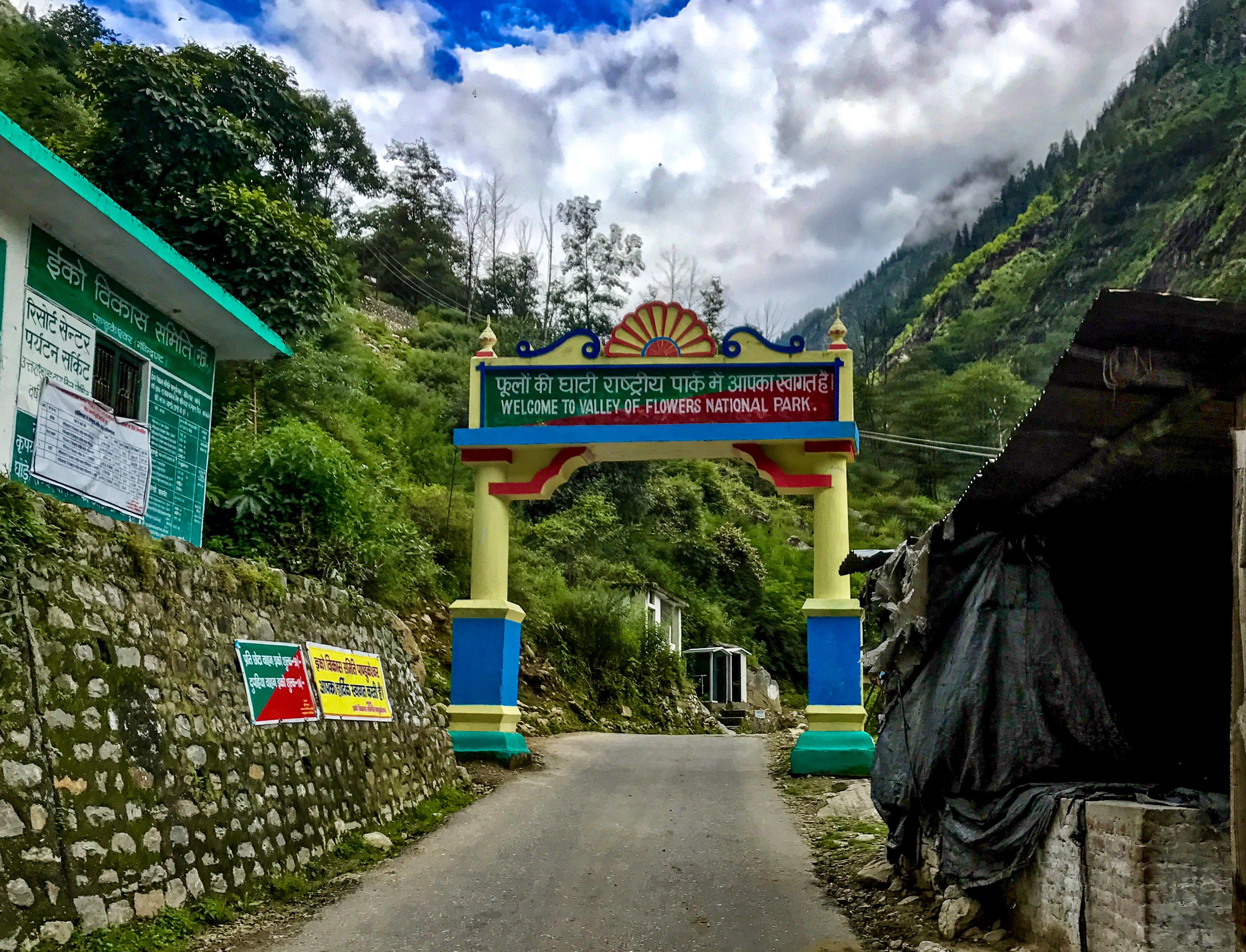
By air: The nearest airport is Jolly Grant Airport in Dehradun, from where it takes around 11-12 hours to reach Joshimath and then further to Govind Ghat
By road: Delhi to Haridwar is a 5-hour journey. Buses ply frequently from ISBT Kashmiri Gate. Haridwar to Joshimath is an 11-hour journey. This part is tricky because if you plan on catching a state roadways bus, you can do it until 7:30 am. For the rest of the day, taxis are available on a reserved/sharing basis. A taxi from Haridwar to Joshimath would cost you INR 3-4k.
Please note that helicopter services are also available from Ghangaria to Govindghat & Badrinath.
Ideal duration for Valley of Flowers Trek: 6 days (including Hemkund Sahib trek)
Approximate budget required: INR 15000 approximately (from Delhi)

Image Courtesy: Debraj Das
Circuit: Haridwar – Auli – Govindghat – Pulna – Ghangaria – Hemkund Sahib – Ghangaria – Valley of Flowers – Ghangaria – Pulna – Govindghat – Auli – Haridwar
Day 0: Arrival at Haridwar

With an ecstatic mind and a restless soul, I boarded the UPSRTC Volvo bus from Kashmiri Gate. After a 6-hour journey, the bus dropped me at Haridwar Railway Station on the morning of July 29th. At 4 am, I had no other option but to book a hotel until morning. This hotel was located 50 meters from the Haridwar Railway Station. At 9 am, I reached the station entrance where our tempo traveller, bearing the sticker of GIO, was awaiting us.

In an hour, all of us assembled at the pick-up point for the introduction session. Our group consisted of 10 super-passionate people. In no time, we changed from 10 individuals to a small trekking family that stuck together till the next 6 days later.

Image Courtesy: Debraj Das
We started at 10 am from Haridwar and after taking comfortable breaks, enjoying our lunch & tea, avoiding scary roads, and soaking up views, we finally reached Auli at 7 pm. The hosts greeted us with tea, soup, and pakode. Soon they assigned our rooms and we called it a day.

A word of thanks to the team GIO, who ensured that we stayed in the most scenic resorts in Auli. Our stay was set between the Himalayan peaks, apple orchards, and the marijuana plantation. I’d deem it as one of the best stays ever!
Day 1: Trek to Ghangaria

Post breakfast, we left for Govindghat. The overcast conditions made the outdoors even more intriguing. I could feel the bite in the air. Moving past the scary mountain roads and a couple of confluences, we entered the Nanda Devi Biosphere Reserve. Govindghat is a 30-minute drive from here. After getting our pass, we headed to Pulna in a shared jeep.
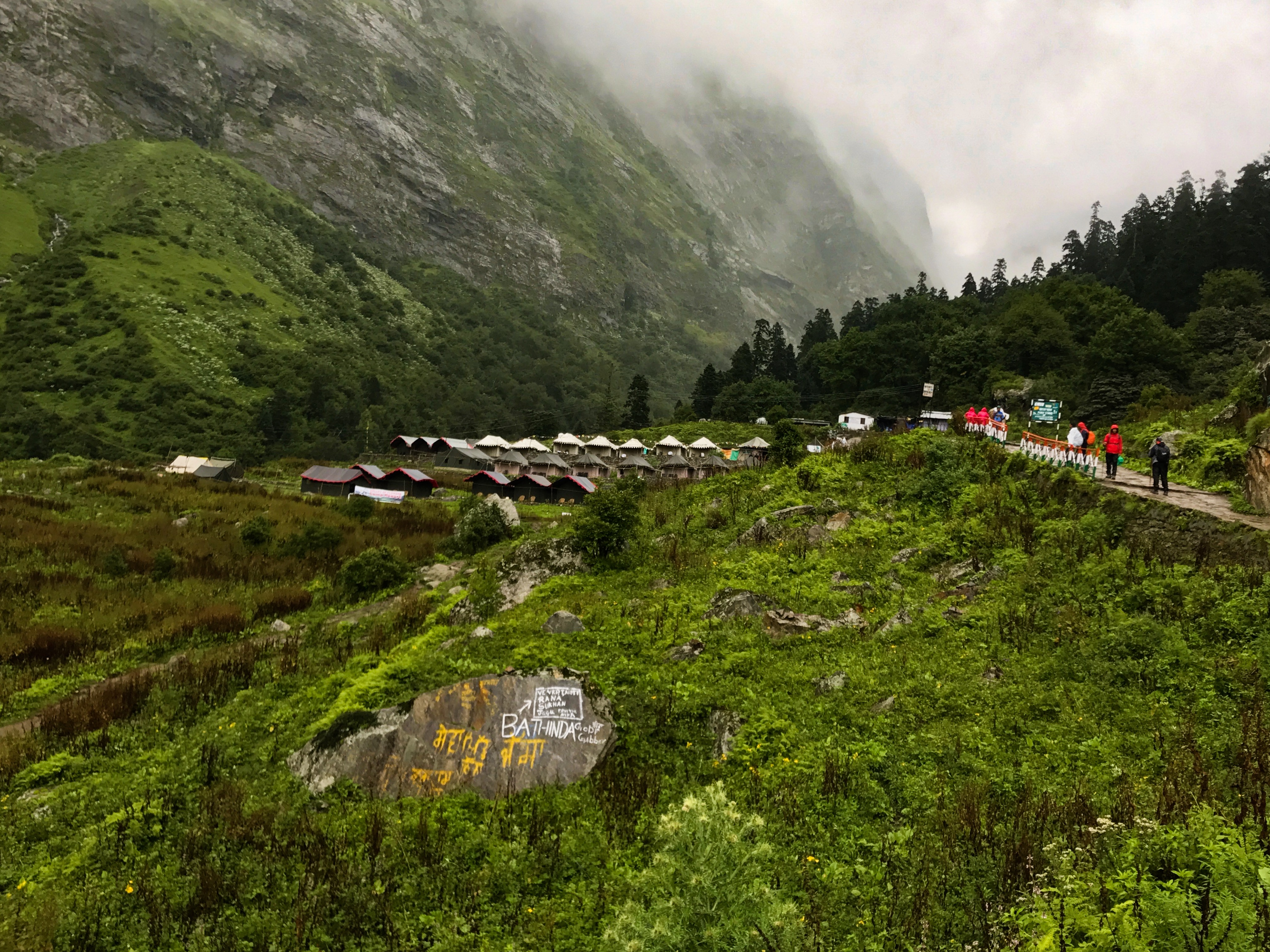
Before midday, we assembled at Pulna all geared up for the big trek. After 8 hours of absorbing trek, we finally reached Ghangaria – the base camp for the Valley of Flowers & Hemkund trek. Upon arrival, we were served with steaming hot soup and were allotted rooms.

Pulna – Ghangaria:
Distance travelled: 14 km trek
Time taken: 8 hours

Day 2: Hemkund Trek

Day 2 was all about twists and turns. Excitement and adventures awaited us! Oh, did I mention that by the time we reached Ghangaria, it started raining quite a lot? The forecast didn’t look good for the next day. We woke up to gloomy weather, and it was pouring all around.
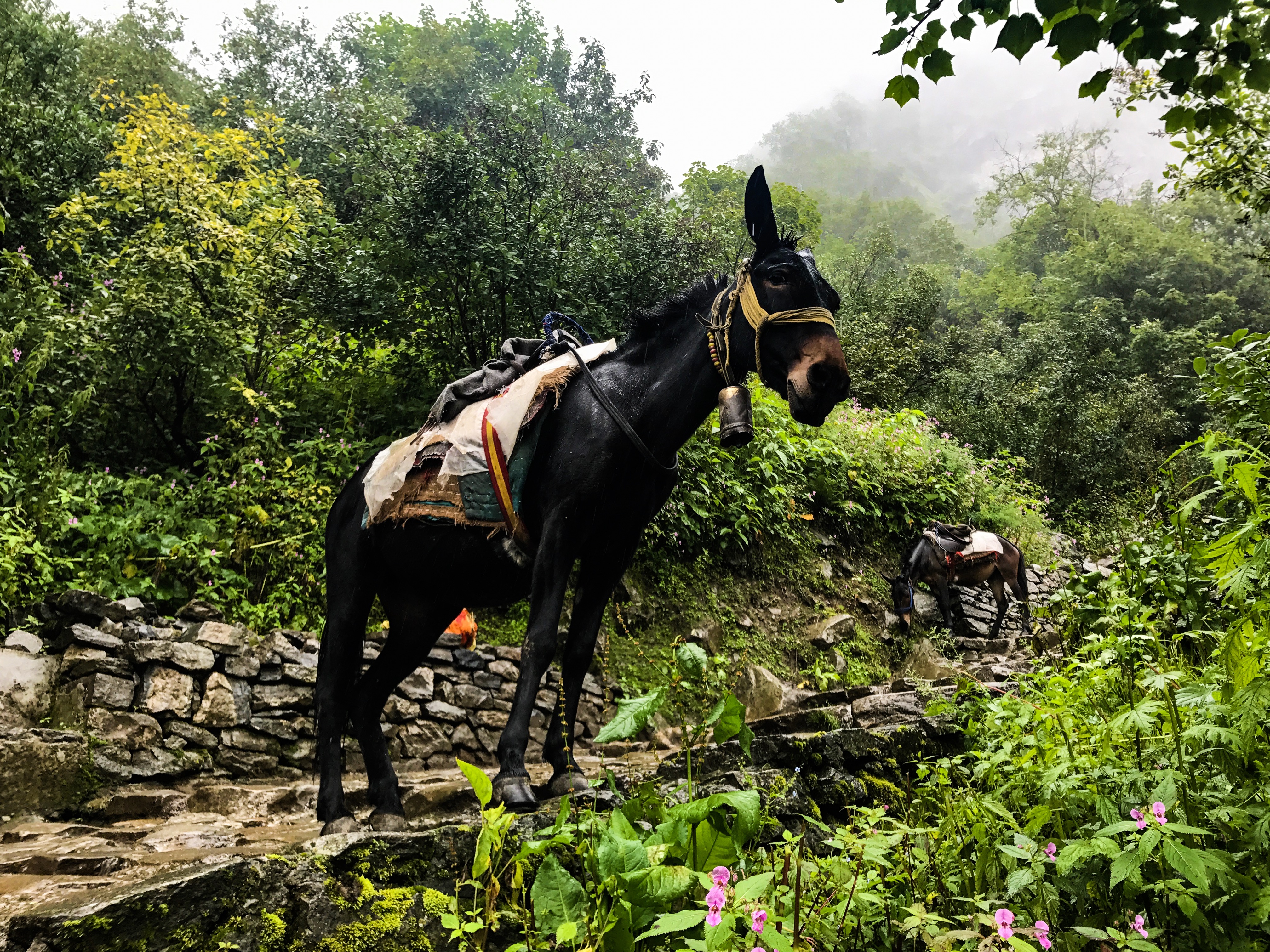
As we gathered at the origin of the trek, we were informed that, fearing the chances of a landslide, the forest department had restricted any entry to the valley.

Durgaji (our trek leader), also a seasoned mountaineer, decided that we must do the Hemkund first. The 12-km trek turned out to be harder than we anticipated. Hemkund, perched atop the mountains near Hemkund Glacier, is a 6 km uphill trek.

Towards the end of the trek, there is a steep flight of almost 1500 stairs. This one is somewhat vertical but reduces the trek by almost 400 meters. I took the stairs and returned by the normal route.

At the Gurudwara entrance gate, I could easily hear the holy chants playing on loudspeakers. And I was stupefied by the spirit of Sardars staying there on the mountains at 4600 meters in such extreme conditions.

The Gurudwara lies nestled in the glacial mountains with scenic sights all around. Fog and clouds engulfed us, and we could barely see anything. But, from whatever we saw, the views occupied us. We got lucky to observe the last round of ardaas at 1:30 pm. It also happens to be the last prayer of the day.

After eating prasad, we headed towards the Langar, where we were helped with piping hot khichdi and tea. The weather was freezing outside, and despite wearing a poncho (raincoat), I was soaked top to toe. It was at the Gurudwara that we decided to change our clothes and recommence our trek back to Ghangaria.

If you thought we were only toiling hard with intense trekking, you are mistaken! We had loads of fun together, capturing magnificent views around, munching on candies, and stopping at random shops for Maggi and tea! It took us almost 5 hours to reach the summit, and a little more than 3 hours to trek back to the hotel.

Upon our arrival at the hotel, we were served a delicious meal. It was the time when I figured out that I had caught a cold and a fever. In no time, I popped a few paracetamol tablets.

My body had already started showing the symptoms of fever by the time I entered the hotel. An intense day came to an end. For now, the only thing on our minds was, are we trekking to the Valley of Flowers tomorrow? This was an important question because there were no signs of the rainfall coming to a halt. The body was tired, but the spirit soared high. A good sleep won’t take time to come!

Distance traveled:13 trek
Time taken: 8 hours
Day 3: Valley of Flowers Trek

The sun shone brighter than ever, and we rejoiced. Finally, we were headed to the Valley of our dreams! The 7 km trek took almost 4 hours to complete, and the first look of the valley was mystic.




After having lunch inside the valley, we headed to Joan Margaret Legge’s grave – the British botanist who came to India to study the plant species found in the valley, but accidentally fell from the mountains and died in the valley.



Somewhere in the valley!
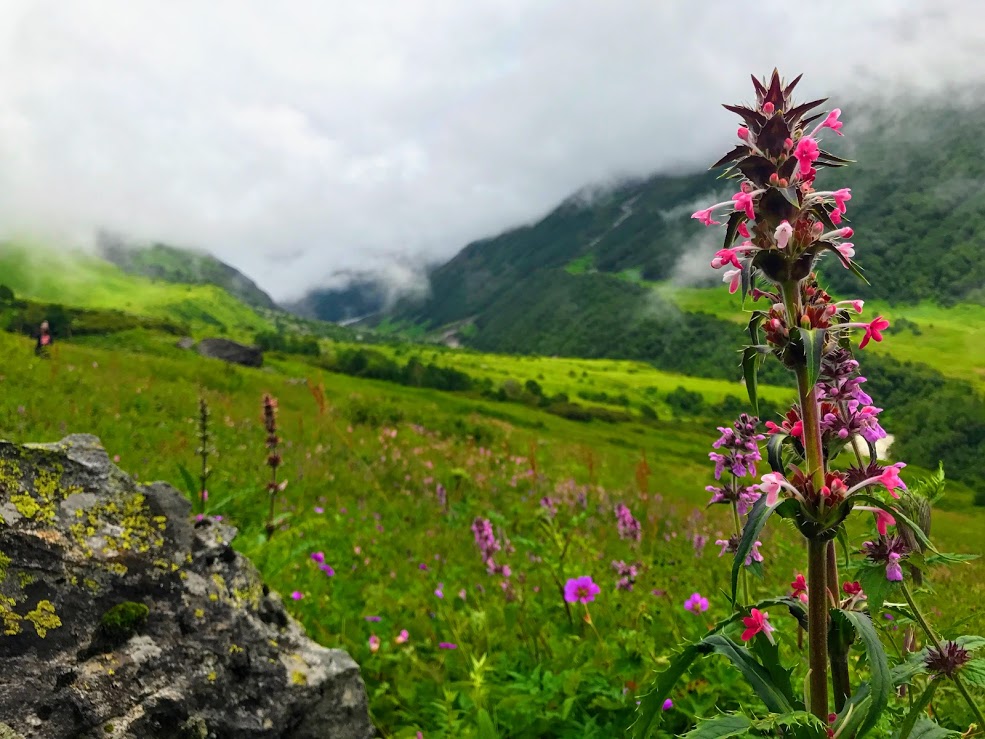
Guides shared the details on the history of the valley with us and educated us about the plants and herbs found in the valley. By 5:30 pm we were back to Ghangaria and it had already started raining by then!

The majestic rock sticking into the valley. This landscape left me spellbound. Our first halt in the Valley of Flowers!
Distance travelled: 12 km
Time taken: 7 hours


Day 4: Back to Auli



Turns out that it was a blessing in disguise. We went on a village excursion in Auli and happened to witness the most beautiful evening of my life. What a mesmerising experience it was!

We caught a rare sight of a Himalayan Ibex having a day out in the mountains. Mountain goats are gifted to comfortably walk vertical mountain slopes.
Ghangaria – Govindghat – Auli – 14 km + 3 km trek – 10 hours
Day 5: Auli to Haridwar

On the final day, we were dropped at the Haridwar Railway Station. Thus concluding an extraordinary 5-day trek in the Himalayas.
My learnings from the Valley of Flowers Trek

- Keep an eye on the weather in the valley. It changes in no time.
- If you are a regular trekker who loves trekking round the year, it’s better to keep waterproof shoes handy. Shaggy shoes aren’t comfortable to walk in. I’ve experienced it, and it’s a terrible feeling.
- Keep fewer clothes (without compromising on the utility ones) and more utility stuff. It helps in a long trek like this one.
- Don’t crib if you aren’t carrying a DSLR. I relied heavily on my iPhone 7, and guess it paid off. I took some amazing photographs with my phone.
- I overlooked carrying a trekking pole and a raincoat. Had it not been for GIO, my life would be in danger without these two essentials. Guys, when you are travelling to the valley, DO NOT forget to pack these two items in your backpack.
- Don’t crib about the stays if you end up in a modest hotel without exotic views from your room. Walk outside, nature awaits you.
What did I pack for the Valley of Flowers Trek?
Clothes
i) Full sleeves tees with collar
ii) Full sleeves, thick jacket
iii) Thermal innerwear
iv) Comfortable T-shirts, tracks or trousers
v) Windproof jacket
vi) Woollen head-scarf/muffler & Mittens
vii) Light towel
viii) Raincoat or Poncho
Footwear
i) Proper trekking shoes
ii) Sports socks – at least 4 pairs
Meds
Crocin, Avil, Combiflam, Disprin, Crepe bandage, Band-aid Cotton, ORS, Betadine or any antiseptic cream, Volini or Moov spray
Other essentials
i) Water bottle with filter
ii) Hot water bottle
iii) Trekking pole
iv) Torch/Headlamps
v) Spare plastic bags
vi) Sunglasses (with UV protection)
vii) Lip balm
viii) Vaseline
Embarking on the Valley of Flowers trek was a soul filling experience for me. If you’re planning this journey or have stories to share, I’d love to hear from you.
Share your thoughts in the comments or connect with me on Instagram. Let’s inspire each other to explore the majestic Himalayas.
FAQs
1. How close can one reach the Valley of Flowers by Vehicle?
The closest you can get to the Valley of Flowers is Pulna, 5 km from Govindghat.
2. Are helicopter services available to the Valley of Flowers trek and Hemkund?
Yes, you can reach Ghangaria by helicopter and then take a mule to reach Hemkund Sahib. Mule services are not available for the Valley of Flowers, but you can hire porters.
3. Which is the nearest airport to the Valley of Flowers?
Jolly Grant Airport is the nearest, from where the Valley of Flowers can be reached by air.
4. Are trekking essentials and equipment available at the Valley of Flowers base camp in Ghangaria?
Yes, you can find all the trek essentials at Ghangaria. During the peak season, everything is available.
5. What are the stay options at Ghangaria?
There are plenty of stay options available in Ghangaria. One can book from hotels and guest houses in Ghangaria. Also, there are GMVN camps and resorts available for the travellers. You can also pitch your tent in the campgrounds near Ghangaria after speaking with the locals. However, staying inside the Valley of Flowers is not permitted. The forest officials sitting at the checkpoint mark every single entry and exit from the valley.
Share this:
- Click to share on Facebook (Opens in new window) Facebook
- Click to share on LinkedIn (Opens in new window) LinkedIn
- Click to share on Reddit (Opens in new window) Reddit
- Click to share on X (Opens in new window) X
- Click to share on WhatsApp (Opens in new window) WhatsApp
- Click to email a link to a friend (Opens in new window) Email

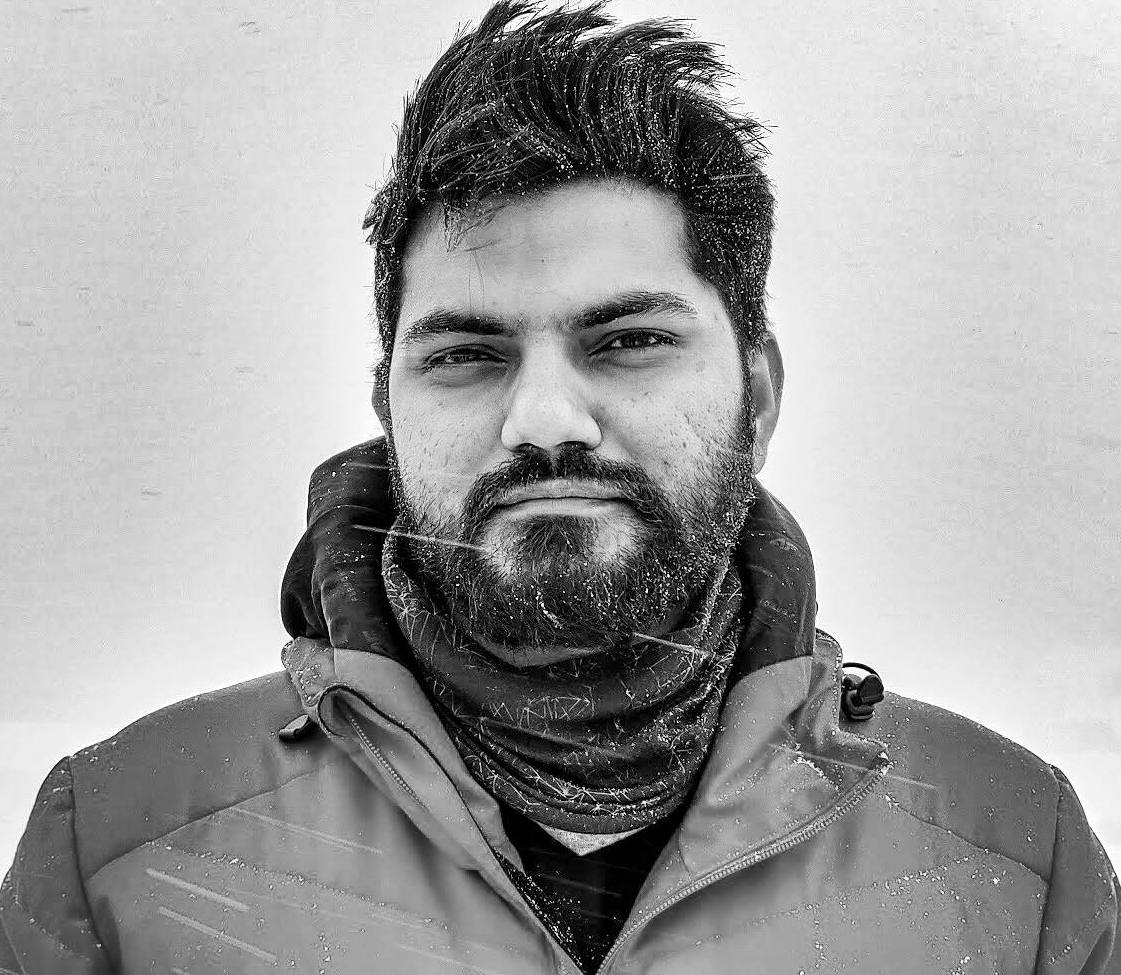
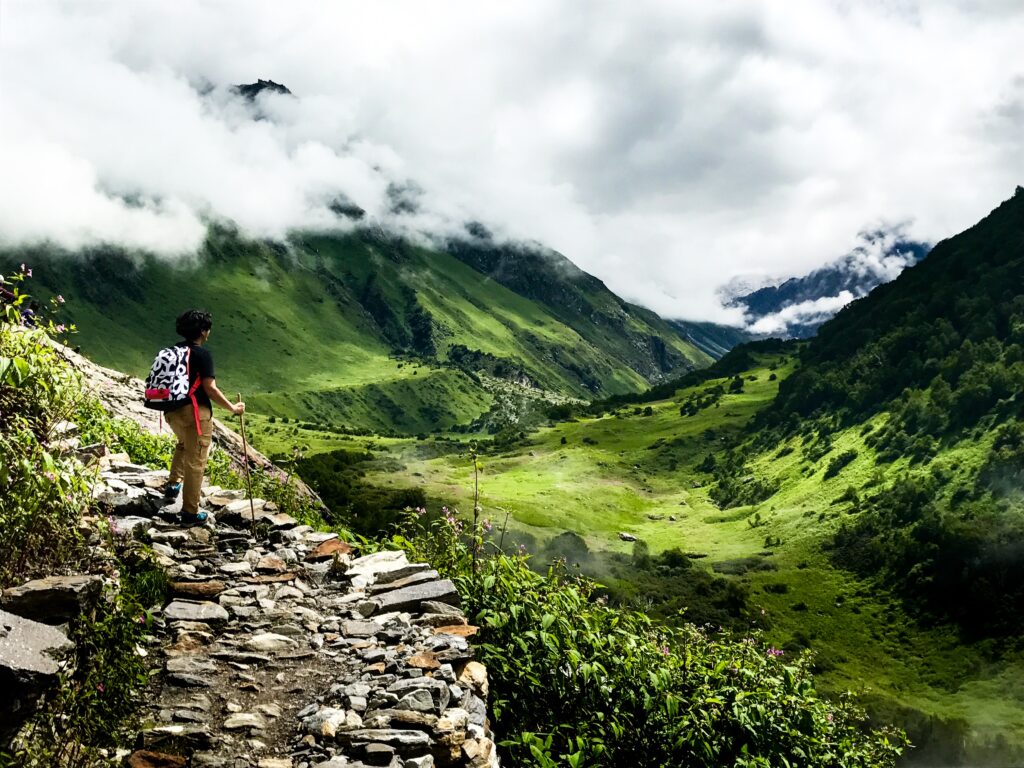
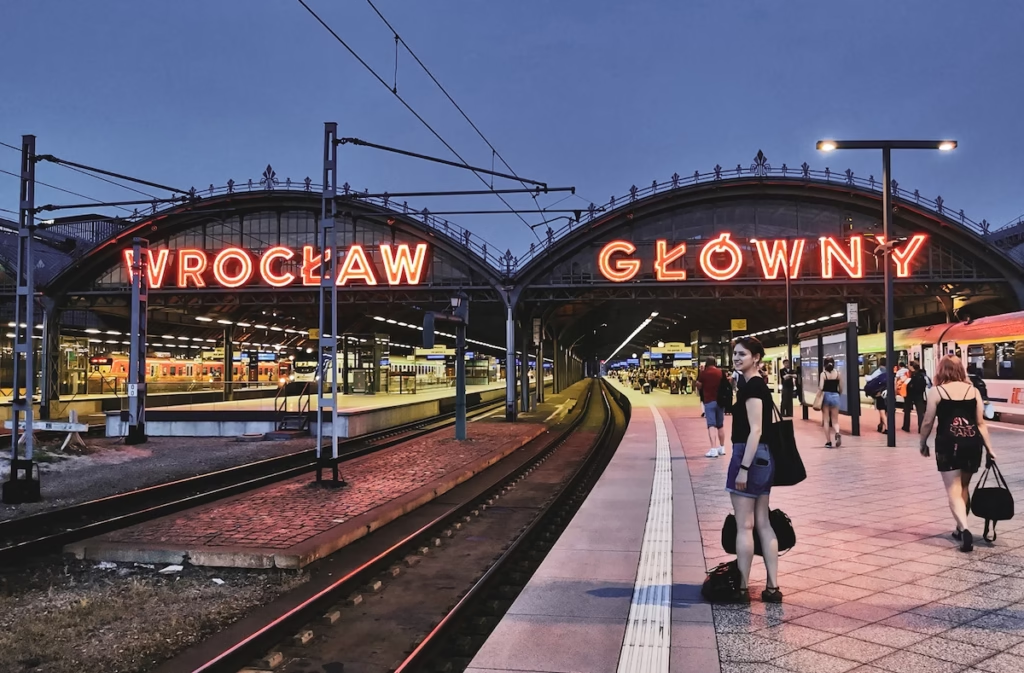
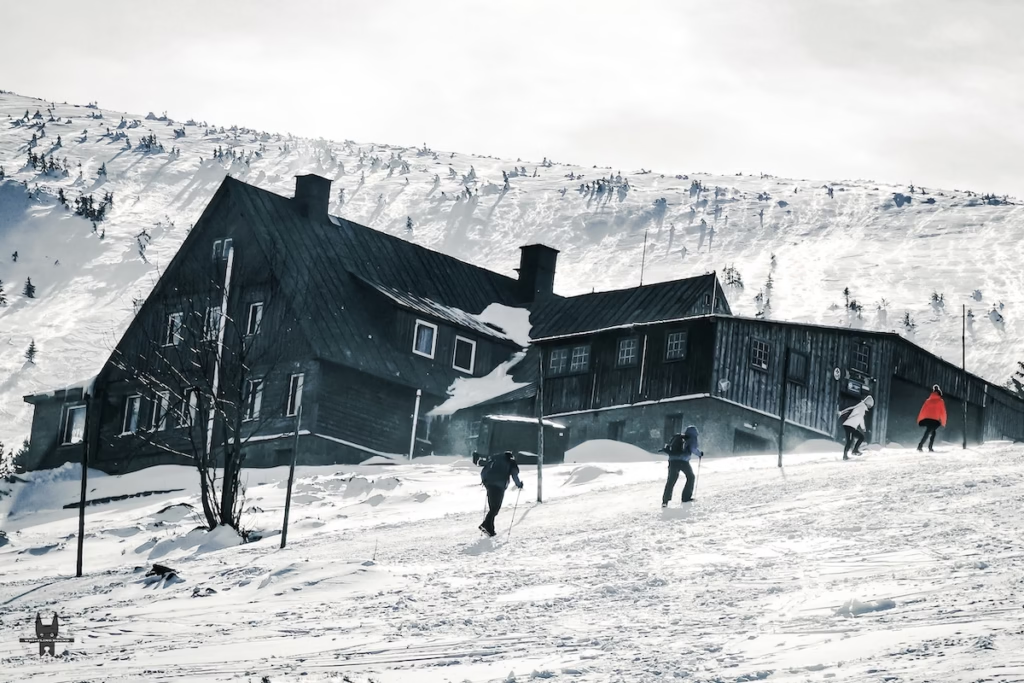
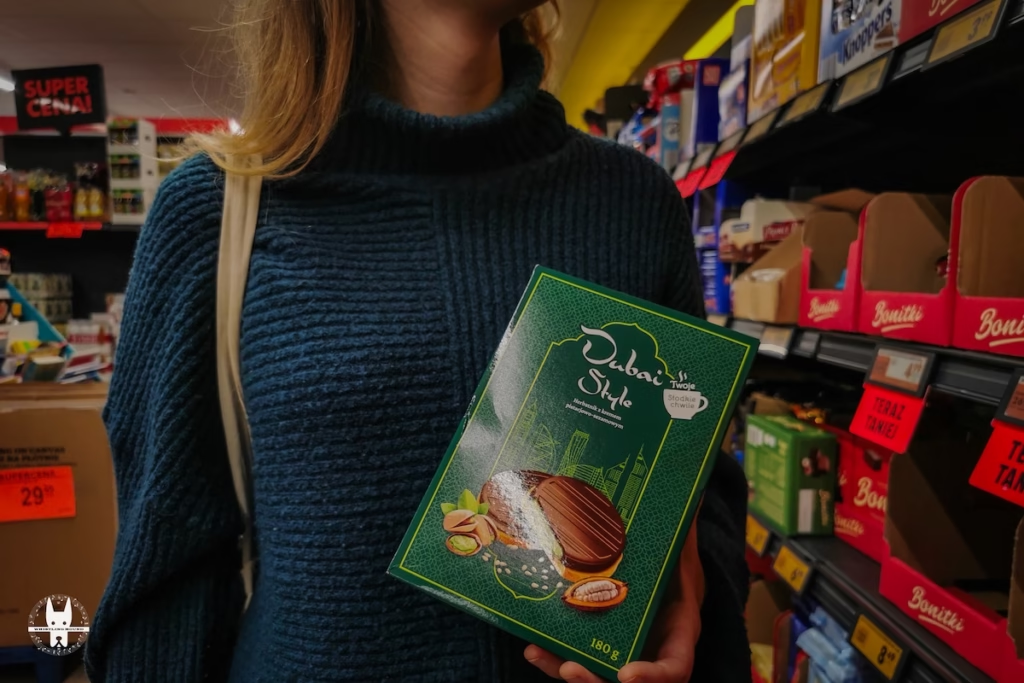
4 thoughts on “Valley of Flowers & Hemkund Trek: Iconic Himalayan Adventures Unveiled”
Fantabulous !!!! Excellent Pics !
Thanks man! Glad that you liked it.
That’s a beautiful travelogue. I have been to VOF too. It was a self-organized trip and everything went quite well and as per the plan.
Thank you so much, Arv! I’m sure you too must have like the place.